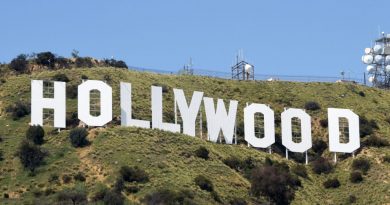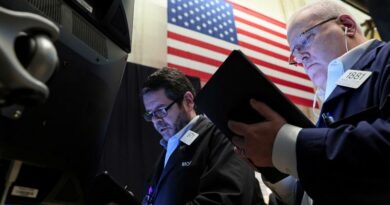Tim Groser: Joe Biden’s first 100 days in office – political adults in charge of the White House
OPINION:
US President Joe Biden has just completed his first one hundred days – and what a hundred days it has been. Let’s look at what he has achieved and peer into the future as to what this may mean for NZ.
Start with the first issue on his political plate: the pandemic. In a true crisis – and the death of half a million Americans from the pandemic surely justifies that term – the high-level messaging from the apex of political power matters enormously. This virus, it has been cynically observed, loves populist leaders.
All the previous equivocation of his predecessor, including espousal of medical absurdities, has disappeared. With over 50 per cent of American adults having received their first jab and about a third being fully vaccinated, real progress is being made – even as the number of new global cases is increasing.
More mundane, but vital to efficient government, is the formation of the new Administration. This is a nightmare in the US for every Administration, because of the politicisation of appointments goes so deep.
Over 4,000 key positions are political appointments, and about a quarter of these have to go through the US Senate. But Team Biden was thinking ahead: they had over 1,000 of the appointments that do not require Senate confirmation, already in place and ready to start work immediately after the President’s inauguration. I call that hitting the ground running.
With respect to the key appointments – Secretary of State, Treasury Secretary etc – forget the usual debate about “diversity” vs “competency”. President Biden has managed to tick both boxes. Only five of his 15 Cabinet appointments are straight, white, men (unsurprisingly, I’m wholly in favour of appointing a solid contingent of competent straight, white men, but you can have too much of a good thing).
For example, Lloyd Austin, the first African American soldier to be chosen as Secretary of Defence, was already a distinguished four-star General in charge of Centcom (US Central Command).
The President’s new USTR (Trade Minister), Katherine Tai, a Chinese American and fluent Mandarin speaker, is a seasoned professional who played a huge part in steering through the upgrade of the giant Nafta Trade deal that unites the supply chain of North America with almost universal support in Congress (note to trade sceptics: yes, there is a way forward for the United States on trade, it’s just a slightly different way forward).
On foreign policy, the dangerous ambiguity introduced by former president Donald Trump around the US commitment to Europe’s security has been removed by both words and deeds (planned troop withdrawals in Germany have been reversed).
The Biden Administration has completely changed for the better the outlook for international collaborative action on climate change – not only by recommitting to the Paris Agreement (that was the easy part) but by setting a bold new target for US emission reductions and immediately restarting the climate change dialogue with China. Sure, this will involve massive fights in Congress, but the Executive Powers of the President to move the game forward are considerable.
Even bolder was the decision to withdraw troops from Afghanistan – 10 years too late, perhaps, but a tough call for any President to make. And a central stated reason for this is good news for Australia and NZ: the new Administration wants to focus on its priority theatre – the Asia Pacific.
To confront the massive economic shocks caused by the pandemic – 20 million American jobs were lost – eye-watering amounts of cash have been injected into the economy. The old political joke attributed to some long-forgotten US Senator – “a billion here, a billion there, and pretty soon, son, you’re talking real money” – is hopelessly out of date.
We are seeing thousands of billions being injected into the world’s largest economy. It has worked – an annualised GDP growth rate of 6.4 per cent in the first quarter of 2021 can hardly be characterised as a “dead cat bounce”.
A note of caution here, however: they may well have overdone it. As has been observed, a large dose of antibiotic to cure a very sick patient is the right thing to do, but too much and you endanger the long-term health of the patient once recovered.
Eminent economists, hardly identified with the hard right “austerity at any price” crowd (former US Treasury Secretary, Larry Summers, former IMF Chief Economist, Olivier Blanchard), are of this view. The Governor of Federal Reserve (the ‘”World’s Central Banker”) and the new Treasury Secretary, Janet Yellen, are both saying they will look through – even welcome – the immediate rise in inflation that is anticipated.
There is, therefore, near zero short to medium-term risk of the Fed leading an international effort to “normalise” monetary policy – something that would create blood on the streets of certain over-leveraged asset markets. But longer term?
If the rise in measured inflation turns out to be not a spike and markets start expecting further inflation, we may hear again the old phrase from the ’80s: “talking about a little inflation is like talking about a little pregnancy”.
But there are two things at play in these huge new programmes. One is economic stimulus, the other is more subtle and just as important: it is about addressing the huge anxiety of the American middle class.
In the last 30 years, the American working class has gone backwards and the middle class has gone sideways. There are numerous statistics that bear on this. I like these two: in a survey in 2015, 40 per cent of Americans could not afford an emergency bill of US$400 ($549.50) or more.
In 1970 the largest employer was General Motors and, adjusted for inflation, the average hourly wage was US$30; in 2015 the largest employer was Walmart and the average wage was US$9. If either you or your partner lose your job and have kids, it is a catastrophe because of the absence of any real safety net.
The massive boost to public health and public education proposed by President Biden’s trillion dollar bills (one example: free education for 3-5 year olds) are aimed to change this.
It is being portrayed by their opponents as a “lurch to the left”. I see it differently. The rest of the democratic developed world accepted more than 75 years ago the basic deal that a predominantly market economy requires solid, decent, plain vanilla public health, public education and social safety net provisions.
Sure, the armwrestle about the extent of these programmes, the best delivery systems, about “fairness” vs avoiding “welfare dependency” is the daily bread and butter of politics in these countries – but the fundamental proposition is not contested.
The US is the odd man out here – and if my female and transgender friends feel this phrase lacks inclusiveness, I can certainly rephrase it. Rather than being a lurch to the left, I think the President’s programme is an historic attempt to make the most important of all developed democracies a more “normal” country.
This is linked to trade policy. The top people in this Administration, from the President down, are not protectionists – their predecessors were. Their strategy – and it is explicit – is to strengthen the resilience of the vast middle class, who felt threatened by trade agreements, and then move out on trade. This will take time: there is a logical political strategy behind this and a logical sequence that goes with it.
The Asia Pacific will be the key focus. They will adopt a realistic position on China (they are already re-engaging on vital issues) but central to their thinking is to work with “allies, friends and partners”.
They know they have to have an economic game in the Asia Pacific to compete with China. They will not reinvent the wheel. Expect to see, sometime after the mid-term election, another friendly takeover of CPTPP by the US, just as happened (to my relief) when I was Trade Minister and the first iteration of an Asia-Pacific-wide FTA – P4 (Pacific Four, led by NZ) was taken over by President Obama and Mike Froman – his key person on trade.
We’ll probably have to find yet another name for the agreement (partly because the UK is likely to come in at the same time) and add yet further and probably useful new bells and whistles to the Agreement’s provisions.
It will also be the real Plan B for the WTO, if nothing real is happening there again in Geneva. NZ will face a very simple decision. Our larger partners in the existing agreement – Japan, Canada, Mexico and Australia – will require less than one-tenth of a political nano-second to say “yes” to the Americans (for strategic, not trade reasons) and we will simply have to decide whether we want to stay on the bus or get left behind at the bus stop. I am certain we will decide to maintain our seat on the bus.
There is of course a political strategy behind this. If the Biden Administration is running hard now it is because the frightening churn of American politics is just around the corner.
Sitting on a razor-thin majority in the House and a 50/50 split in the Senate, they have a brief window of opportunity to ram through large parts of their programme – including using controversial parliamentary procedures (for aficionados of American politics I am talking about the Vice President’s casting vote and, more importantly, the budget reconciliation procedures to overcome the filibuster). The mid-term elections are only some 18 months away.
Today’s Republican Party is unrecognisable from the political party we and the Australians have been dealing with successfully in the post-war era. There is no organised voice in Congress for the moderate centre-right – although many Democrats relocated to serve either in the Australian or NZ Parliaments would be so considered.
There are, of course, still large numbers of outstanding Republicans – some of whom I have known for decades – who are trapped in an organisation that behaves more like a cult than a political party, waiting for the next signal from the Oracle at Mar o Lago.
The prediction of the outgoing Republican House Speaker – John Boehner – when he resigned in late 2015 proved remarkably prescient: ‘there is no such thing as the Republican Party, it is the Trump Party’.
However, as one astute commentator has put it – “Trump rode to power on the rage of the middle class”. If sufficient of Biden’s programme aimed at reducing the anxiety of the middle class can be put in place, a large chunk of the (non-evangelical) voting block could be brought back to the Democratic voting fold.
If so, that would totally change the internal politics of the Republican Party for the better in the lead up to the next Presidential Election. It would demonstrate the brutal truth that, bar the far right and the huge number of evangelicals, the American public had lost interest in a party consumed by the myth that the last Presidential election was stolen from them.
That scenario would add further fuel to Churchill’s observation that our American friends, on whom we depend so much, can always be relied upon to do the right thing “after they have exhausted all the alternatives”.
• Tim Groser is a former New Zealand Trade Minister from 2008–2015.
Source: Read Full Article

/cloudfront-ap-southeast-2.images.arcpublishing.com/nzme/RM5ZYKYKD6U5QHXC6NZTN3XOCU.jpg)
/cloudfront-ap-southeast-2.images.arcpublishing.com/nzme/VXL5LOYXWP6KB2T3AVW2HRMRXY.jpg)
/cloudfront-ap-southeast-2.images.arcpublishing.com/nzme/FRPOUFV633E223BLHNBGAZMKIM.jpg)

